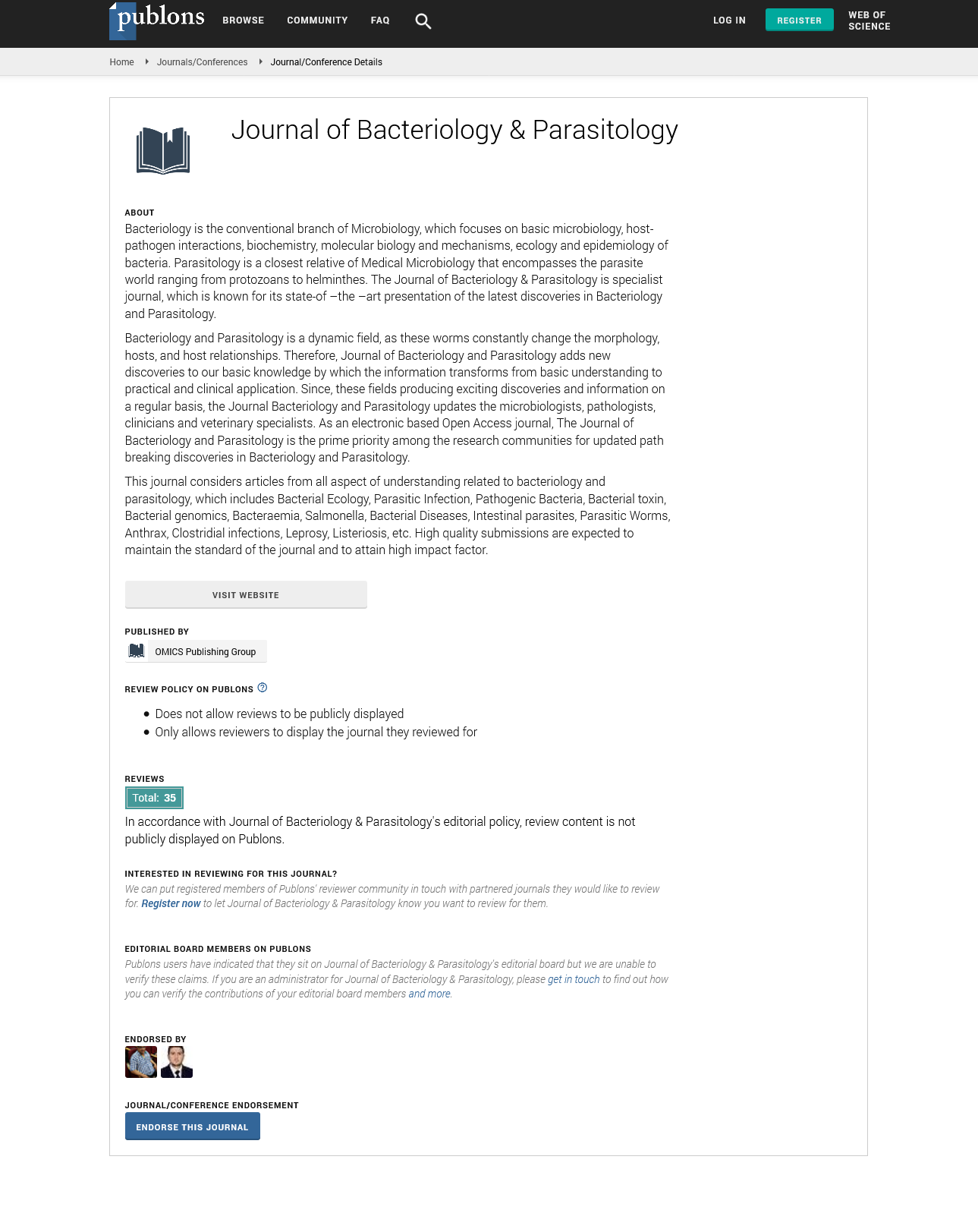Indexed In
- Open J Gate
- Genamics JournalSeek
- Academic Keys
- JournalTOCs
- ResearchBible
- Ulrich's Periodicals Directory
- Access to Global Online Research in Agriculture (AGORA)
- Electronic Journals Library
- RefSeek
- Hamdard University
- EBSCO A-Z
- OCLC- WorldCat
- SWB online catalog
- Virtual Library of Biology (vifabio)
- Publons
- MIAR
- Geneva Foundation for Medical Education and Research
- Euro Pub
- Google Scholar
Useful Links
Share This Page
Journal Flyer

Open Access Journals
- Agri and Aquaculture
- Biochemistry
- Bioinformatics & Systems Biology
- Business & Management
- Chemistry
- Clinical Sciences
- Engineering
- Food & Nutrition
- General Science
- Genetics & Molecular Biology
- Immunology & Microbiology
- Medical Sciences
- Neuroscience & Psychology
- Nursing & Health Care
- Pharmaceutical Sciences
Chronic infectious diseases through centuries
5th International Conference on PARASITOLOGY & MICROBIOLOGY
July 12-13, 2018 Paris, France
Cecile Louise Jadin
Universite catholique de Louvain, Belgium
Posters & Accepted Abstracts: J Bacteriol Parasitol
Abstract:
The agents of typhus and para typhus have been discovered in the early 90�??s (1908 till 1930). The authors of these discoveries received the Nobel Prize and died of the disease because of the lack of proper treatment: specific medical antibiotics. Although the main vector of typhus (Rickettsia prowazeki, R. conori, R. mooseri, Coxiella burnetii) and para typhus (Mycoplasma and Chlamydia) is the rat, staying well alive on the planet, these investigations are not currently offered by the average serological laboratories. Typhus and para typhus, just as Borreliosis, are the origin of many vascular diseases as they are known to tear endothelial cells, due to their obligated intra cellular position. None of those conditions are no more or not yet presented in any medical syllabus, except in the Pasteur Institute in Tunis. They travel from concentration camps to history without being engulfed by the medical fraternity except for Borreliosis that had to substitute its original name for Lyme disease to survive. The rehabilitation of these mass killers of all time in our protocols seems incontournable to allow clear diagnoses in Medicine, to move from symptomatic to etiological treatments. On the other hand, as one germ alone is never found in a patient, we add to our routine investigations; Toxoplasmosis, Brucellosis, Helicobacter pylori and Bilharziosis. This last one is on a drastic increase since recent migration flow. A germ can be carried by human without symptoms. It is therefore, important to link their presence to possible unbalances they might create in their victims. Liver, kidneys, FBC, Thyroid, iron and auto immune factors will allow us to differentiate the active from the inactive germs.

